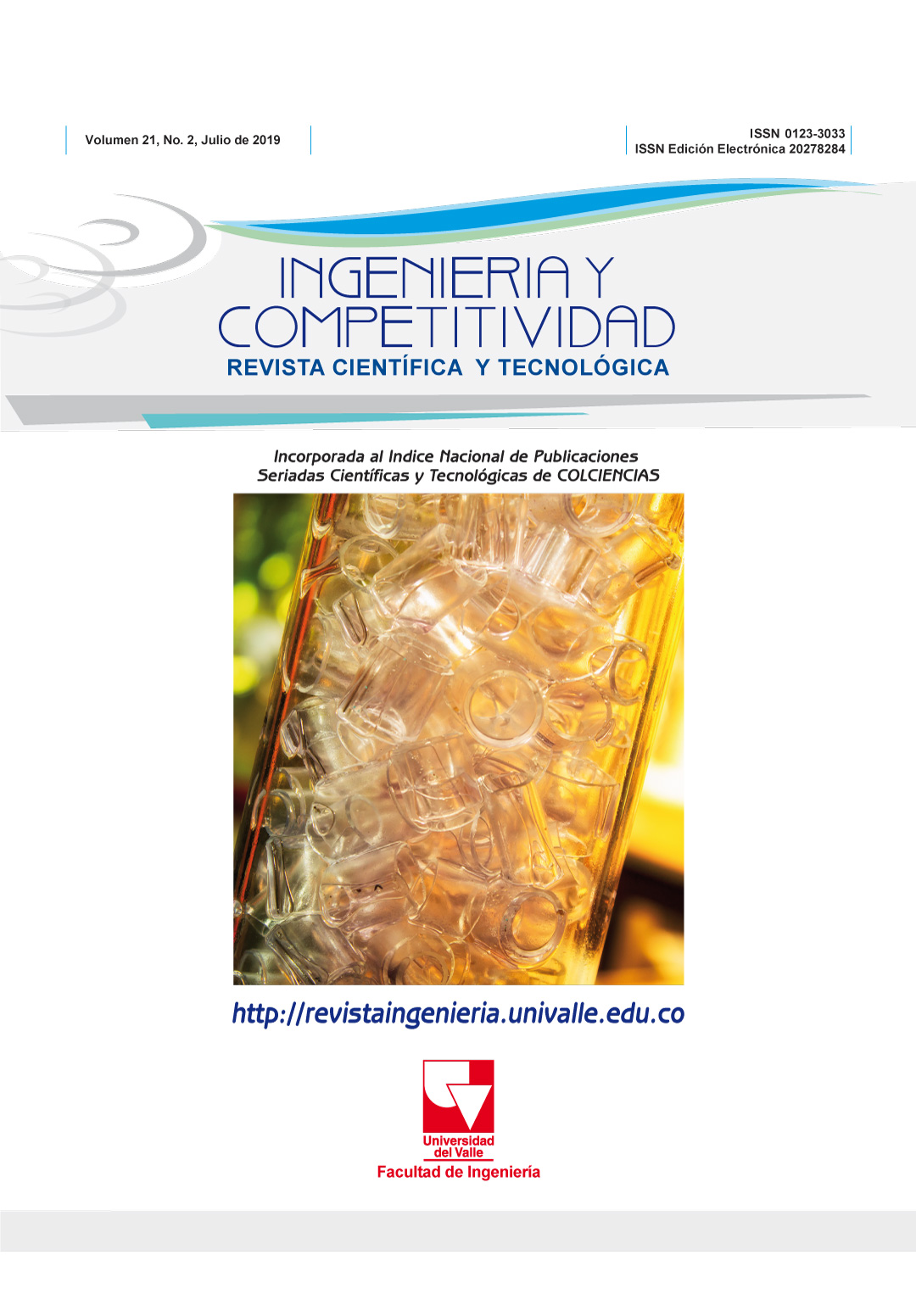Desarrollo de un APP informativo para situaciones de riesgos sismológico para la ciudad de Bogotá
Contenido principal del artículo
dispositivos móviles relacionadas con situaciones de riesgo sísmicas que permita a la ciudadanía tener información oportuna sobre riesgos de tipo sísmico. Los objetivos de la investigación conducen a elegir una metodología de tipo investigación aplicada, permitiendo desarrollar una herramienta tecnológica denomina da BOGSAT (Sistema de alerta temprana ). Los resultados permiten identificar que este tipo de aplicaciones se constituyen en mecanismos de divulgación para la prevención de riesgos y desastres. Así mismo, el estudio de termino que en Bogotá es necesario consolidar bases de datos para proporcionarle información a los habitantes de la ciudad. En conclusión, esta aplicación favorece la consolidación entre la tecnología y los entornos colaborativos, de tal forma que sean referentes para obtención de información en la prevención de desastres.
- Tecnología aplicada
- App móvil
- Riesgo sísmico
- Conciencia social
- Vulnerabilidad
(1) Instituto Distrital de Gestión de Riesgos y Cambio Climático. Riesgo Sísmico - Idiger [Internet]. 2016 [Consulted 2018/06/11]. Available from: https://www.idiger.gov.co/rsismico.
(2) Salgado M, Bernal G, Yamín L, Cardona O. Evaluación de la amenaza sísmica de Colombia. Actualización y uso en las nuevas normas colombianas de diseño sismo resistente NSR-10. Revista de Ingeniería. 2010; (32):28-37. Doi: 10.16924%2Friua.v0i32.191. Available from: https://ojsrevistaing.uniandes.edu.co/ojs/index.php/revista/article/view/191.
(3) Thomas J. Evaluación de la vulnerabilidad social ante amenazas naturales en Manzanillo (Colima). Un aporte de método. Investig Geográficas [Internet]. 2013;(81):79–93. Available from: http://www.investigacionesgeograficas.unam.mx/index.php/rig/article/view/36383/32981.
(4) Cabero-Almenara J, Ruiz-Palmero J. Las Tecnologías de la Información y Comunicación para la inclusión: reformulando la brecha digital [Internet]. IJERI: International Journal of Educational Research and Innovation. 2017; (9):16-30. Available from: https://www.upo.es/revistas/index.php/IJERI/article/view/2665.
(5) Garcia-Acosta V. El riesgo como construcción social y la construcción social de riesgos. Desacatos. 2005;(19):11-24. Doi: 10.29340/19.1042. Available from: http://desacatos.ciesas.edu.mx/index.php/Desacatos/article/view/1042.
(6) Buitrago R. Incidencia de la realidad aumentada sobre el estilo cognitivo: caso para el estudio de las matemáticas. Educación y Educadores. 2015; 18(1):27-41. Doi: 10.5294/edu.2015.18.1.2. Available from: https://educacionyeducadores.unisabana.edu.co/index.php/eye/article/view/4372.
(7) Vargas Z. La investigación aplicada: Una forma de conocer las realidades con evidencia. Revista Educación. 2009; 33(1):155-165. Doi: 10.15517/REVEDU.V33I1.538. Available from: https://revistas.ucr.ac.cr/index.php/educacion/article/view/538.
(8) Szalvay V. An Introduction to Agile Software Development. Danube Technologies, Inc [Internet]. 2004;11. Available from: http://www.danube.com/docs/Intro_to_Agile.pdf.
(9) Gomez N, Mendoza G. Entornos colaborativos: Una nueva forma de gestionar el riesgo. Revista Espacios. 2018; 39(26):19-33. Available from: http://www.revistaespacios.com/a18v39n26/a18v39n26p19.pdf.
(10) Gutierrez-Cantos AN, Nazareno-Pulia BV. Diseño De Un Sistema Computarizado Inteligente Para La Detección Sísmica Y Alerta Temprana Con Comunicación Ethernet Y Tecnología Móvil [Internet]. Universidad de Guayaquil; 2017. Available from: http://repositorio.ug.edu.ec/bitstream/redug/24009/1/B-CINT-PTG-N.227.Gutierrez Cantos Nixon Andres.Nazareno Pulia Brigette Veronica.pdf.
(11) Zambrano Vizuete AM, Palau CE, Domingo ME, Zambrano OM. Sistema de alerta temprana para terremotos: Una propuesta innovadora y económica basada en Smartphones. Quito: EPN, editor. Memorias XXVI Jornadas en Ing Eléctrica y Electrónica [Internet]. Quito, Ecuador; 2016. p. 322–30. Available from: http://bibdigital.epn.edu.ec/handle/15000/17235.
(12) Lizcano-Rodriguez A, Lara-Centeno R de la C. Aplicación de las TIC en el análisis y percepción del nivel de vulnerabilidad de edificaciones residenciales de la ciudad de Cúcuta. Rev Ingenio UFPSO [Internet]. 2016;11(1):19–26. Available from: http://revistas.ufpso.edu.co/index.php/ringenio/article/view/388.
(13) Xuefeng Z, Niannian W, Ruicong H, Botao X, Yan Y, Mingchu l, et al. Urban infrastructure safety system based on mobile crowdsensing. International Journal of Disaster Risk Reduction. 2018;27:427-438. Available from: https://doi.org/10.1016/j.ijdrr.2017.11.004.
(14) Bossua, R, Roussela, F, Falloua L, Landesa M, Steeda R, Froberta L. LastQuake: From rapid information to global seismic risk reduction. International Journal of Disaster Risk Reduction. 2018;28:32-42. Available from: https://www.sciencedirect.com/science/article/pii/S2212420918302097.
(15) Tan ML, Prasanna R, Stock K, Hudson-Doyle E, Leonard G, Johnston D. Mobile applications in crisis informatics literature: A systematic review. Int J Disaster Risk Reduct [Internet]. 2017;24:297–311. Disponible en: http://dx.doi.org/10.1016/j.ijdrr.2017.06.009.
(16) Dunn PT, Ahn AYE, Bostrom A, Vidale JE. Perceptions of earthquake early warnings on the U.S. West Coast. Int J Disaster Risk Reduct [Internet]. 2016;20:112–22. Disponible en: http://dx.doi.org/10.1016/j.ijdrr.2016.10.019.
(17) Feldbusch A, Sadegh-Azar H, Agne P. Vibration analysis using mobile devices (smartphones or tablets). Procedia Eng [Internet]. 2017;199:2790–5. Available from: http://dx.doi.org/10.1016/j.proeng.2017.09.543.
(18) Basu M, Ghosh S, Jana A, Bandyopadhyay S, Singh R. Resource mapping during a natural disaster: A case study on the 2015 Nepal earthquake. Int J Disaster Risk Reduct [Internet]. 2017;24:24–31. Available from: http://dx.doi.org/10.1016/j.ijdrr.2017.05.020.
(19) Yanquén-Ramírez C, Otálora-Luna J. Medición de la usabilidad en el desarrollo de aplicaciones educativas móviles. Rev Virtual Univ Católica del Norte [Internet]. 2016;(47):128–40. Available from: https://revistavirtual.ucn.edu.co/index.php/RevistaUCN/article/view/746.
Descargas

Esta obra está bajo una licencia internacional Creative Commons Atribución-NoComercial-CompartirIgual 4.0.
Los autores que publican en esta revista están de acuerdo con los siguientes términos:
Los autores ceden los derechos patrimoniales a la revista y a la Universidad del Valle sobre los manuscritos aceptados, pero podrán hacer los reusos que consideren pertinentes por motivos profesionales, educativos, académicos o científicos, de acuerdo con los términos de la licencia que otorga la revista a todos sus artículos.
Los artículos serán publicados bajo la licencia Creative Commons 4.0 BY-NC-SA (de atribución, no comercial, sin obras derivadas).





